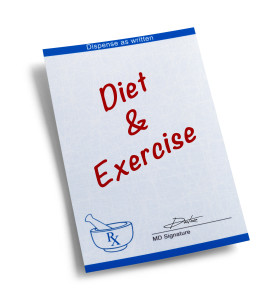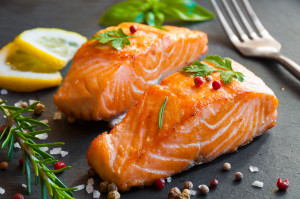December 9th, 2017
 Right now, we are in a midst of an epidemic of Type 2 Diabetes (T2D). This is not surprising. Over the past 30 years, the US population has grown increasingly obese, in some parts of the country over 40% of people report having a Body Mass Index (BMI) of over 30 (clinically obese)! Obesity is one of the main risk factors for diabetes. Why have we become so obese? I think the main factors are overconsumption of calories and lack of physical exertion. We are consuming more processed/packaged foods which are high in simple sugars and saturated fats and sitting more hours in front of electronic devices. Think back to 20 years ago, you had to walk around the mall when you went shopping. When you got a paycheck on payday you had to walk it to the bank and wait in line. Now, you can shop online and have all your packages delivered to your doorstep and your bank account automatically gets replenished on payday. Voila! No physical exertion needed, no calories burned.
Right now, we are in a midst of an epidemic of Type 2 Diabetes (T2D). This is not surprising. Over the past 30 years, the US population has grown increasingly obese, in some parts of the country over 40% of people report having a Body Mass Index (BMI) of over 30 (clinically obese)! Obesity is one of the main risk factors for diabetes. Why have we become so obese? I think the main factors are overconsumption of calories and lack of physical exertion. We are consuming more processed/packaged foods which are high in simple sugars and saturated fats and sitting more hours in front of electronic devices. Think back to 20 years ago, you had to walk around the mall when you went shopping. When you got a paycheck on payday you had to walk it to the bank and wait in line. Now, you can shop online and have all your packages delivered to your doorstep and your bank account automatically gets replenished on payday. Voila! No physical exertion needed, no calories burned.
Diabetes is often preceded by a phase called “prediabetes”. This is usually about a 5 year period where sugars are above normal, but not high enough to qualify as diabetes. Prediabetes is not a period before “the inevitable”. In fact, with proper nutrition, exercise, weight loss, and certain medications prediabetes can be reversed and diabetes prevented. Unfortunately, one third of American adults (84 million) have prediabetes right now! Yes, this is not an exaggeration, 1/3!!! Even more bad news, 9 in 10 people with prediabetes are not aware of their condition!
Simple blood tests can detect prediabetes. These include a fasting blood sugar, hemoglobin A1C (HgbA1C), and an oral glucose tolerance test (OGTT). All primary care offices can run these tests, though the oral glucose tolerance test is typically cumbersome as it requires the person to drink a syrupy sweet liquid and sit for 2 hours. In my own practice, I run the first two tests more often and if there is a discrepancy, I will run the OGTT.
Who should be screened for prediabetes? Anyone who is overweight (BMI>25) and has one of the following risk factors: age>45 years old, first degree relative with Type 2 Diabetes, specific ethnic groups (Asian/Pacific Islander, Native American, Latino, African American), women diagnosed with gestational diabetes during pregnancy or giving birth to babies over 9 pounds, people with high cholesterol, high blood pressure, or prior heart disease/stroke, and people who have taken antipsychotic medications.
One of the most effective ways that people with prediabetes can prevent the onset of true diabetes is by enrolling in a Diabetes Prevention Program (DPP). This is a 16 step program administered widely in many community centers, YMCA’s and local health departments. These programs help people to make healthier eating choices and encourage more than 150 minutes of exercise per week, with the goal of losing at least 4% of the bodyweight. If you need help finding a DPP, you can go to PreventDiabetesSTAT.org. Personalized health coaching is another valuable resource.
Prediabetes is an opportunity to heal and reverse the path to diabetes. If you have any of the risk factors above, schedule an annual physical with a medical provider soon. If you currently have prediabetes, make sure you are eating healthy and exercising. I often tell my patients with prediabetes to think of healthy diet and exercise as effective as a prescription medication. I will often write “Exercise and Healthy Diet” on a prescription pad and hand it to the patient to post on their fridge or desk so they know that is what the doctor ordered. There are no “quick fixes” for prediabetes, but every healthy lifestyle change no matter how small can make a big difference.
June 26th, 2017
 Right now, we are facing a crisis. The world’s oceans are warming up and many fish are dying off. We also have a booming human population that is turning to fish as an alternative to artery-clogging red meat. Fish is a valuable food source that can help to reduce heart disease, diabetes, and even arthritis. We all need to eat fish that is sustainable and healthy. This can be a daunting task since there are so many varieties of fish on menus today. I recently found an amazing website called the EDF Seafood Selector which can help you make environmentally conscious seafood options that also provide health benefits, even filtering down to criteria such as farm raised versus wild caught and which oceans the fish came from. It also lets you know how much mercury content is in each fish, which is very important if you are a woman who is planning to have a child or if you eat fish very often.
Right now, we are facing a crisis. The world’s oceans are warming up and many fish are dying off. We also have a booming human population that is turning to fish as an alternative to artery-clogging red meat. Fish is a valuable food source that can help to reduce heart disease, diabetes, and even arthritis. We all need to eat fish that is sustainable and healthy. This can be a daunting task since there are so many varieties of fish on menus today. I recently found an amazing website called the EDF Seafood Selector which can help you make environmentally conscious seafood options that also provide health benefits, even filtering down to criteria such as farm raised versus wild caught and which oceans the fish came from. It also lets you know how much mercury content is in each fish, which is very important if you are a woman who is planning to have a child or if you eat fish very often.
In general, fish that are predatory (eat smaller fish) and live longer and are larger (like Ahi tuna or swordfish) should be avoided as much as possible. Need more reasons to eat fish?
May 29th, 2017
 We’ve all heard the expression “Rome wasn’t built in a day”. I believe this resonates with our health as well. Many studies have shown that quick fixes such as fad diets and even gastric bypass or gastric sleeve procedures (“stomach reduction surgery”) do not often show permanent changes. The human body seems to have a “set point” where it wants to be. When you deviate from that set point, as when you try to lose extreme amounts of weight, it secretes hormones that make you feel extreme hunger or maybe even depressed which resolve when you gain the weight back. Some of these hormones are secreted by fat cells that sense they are shrinking.
We’ve all heard the expression “Rome wasn’t built in a day”. I believe this resonates with our health as well. Many studies have shown that quick fixes such as fad diets and even gastric bypass or gastric sleeve procedures (“stomach reduction surgery”) do not often show permanent changes. The human body seems to have a “set point” where it wants to be. When you deviate from that set point, as when you try to lose extreme amounts of weight, it secretes hormones that make you feel extreme hunger or maybe even depressed which resolve when you gain the weight back. Some of these hormones are secreted by fat cells that sense they are shrinking.
Think about a long term goal that you’ve had, maybe saving money to buy your first house, planning your wedding, graduating from college, etc. Could you do any of these in 3 weeks or less? how about six months? Probably not. We shouldn’t think we could get 100% healthy in these time frames either. Sure, if you restricted your calories and lived in the gym you could probably see dramatic weight loss (like you often see on those TV shows like “Biggest Loser”), but the weight will come back.
How can anyone become and stay healthy? Just like the analogy of saving to buy your first home, we should think small. Start with the smallest changes and go slow. The key is consistency and to keep motivated.
Here are some tips to get started:
- Set a SMART goal each week. This is something that is specific and measurable. For example, “The first week of June, I will eat one piece of fruit each day.” Avoid goals which are less specific such as “I want to eat more fruits and vegetables.”
- Plan ahead, think about what you will need to do to accomplish your goal and create contingency plans. In the example above with the fruit, perhaps you will need to go grocery shopping and buy 7 pieces of fruit every Sunday. What if you don’t have time to shop one week? Maybe you could keep frozen fruit such as bags of berries or peaches (BTW they are delicious) in your freezer that you could defrost and eat.
- Pick low hanging fruit. Avoid changes that disrupt your life too much. Going from a sedentary life to saying that you are going to workout daily can be a shock to your body. Maybe instead, you can add a 5 minute brisk walk each day. I know that you probably think 5 minutes is too little, but lets remember that 5 minutes a day x 7 days per week x 52 weeks per year, equals a heck of a lot of walking! Also, you may start off with 5 minutes, but perhaps in a few months, it will increase to 15 or 30 minutes when you lose weight and feel more energetic.
- Think about replacing not cutting out. If you are a diehard chocolate fan and eat it every day, cutting it out completely may seem like torture/punishment. However, maybe if you replaced it with non-fat chocolate pudding or sugar free hot chocolate, you can still satisfy your chocolate craving without all the excess calories.
- Pick a diet that works for you. I get this question all the time in my practice, “What’s the best diet to lose weight?” I say, it’s the diet that you fits in with your lifestyle, that you can maintain for the rest of your life, and that does not cause you to gain weight or increase your cholesterol/blood pressure. Everyone is unique and we are learning more and more that our bodies respond differently to the food we eat.
- Write it down. Each week, write your goal for the week down and place it on your desk to remind yourself.
- Recognize obstacles in your path. These can be situations or even people who will unknowingly throw you off. For example, if you decide your goal is to reduce your alcohol intake (alcohol is packed with calories, and can slow down your metabolism considerably), perhaps you can avoid cocktail parties or social events where the focus is on drinking. Perhaps replace those events with activities such as going to the movies with friends, or hiking in a park. Many studies have shown that people with obese friends have a high risk of becoming obese. The reverse is true. Why is this? As humans, we like to do things that others around us are doing, a sort of evolutionary peer pressure. So if your friends are getting ice cream, it would be difficult not to eat with them. Obviously, if your goal for that week was to avoid sweets, you may have a hard time at the ice cream shop! Recognize the challenge and find a way around it.
- Be creative. Think about ways you can achieve your weekly goals.
- Enjoy each little “win” and let that provide motivation for you to keep going. Perhaps, reward yourself in a healthy way! Take time to look back every so often and see how far you’ve come and how great you feel. In my own life, I’m shocked at how many changes in my life I have made over the years, from getting “hooked” on running to cutting out red meat, and to cutting back on my food portions to name a few. Again, these changes were over the course of years of continued improvement. “Slow and steady wins the race!”
May 21st, 2017
There are many “diets” and eating plans recommended for good health these days. Almost everyone has heard about Atkins, Weight Watchers, Zone, South Beach, and many others. I always get asked, “which diet is the best for me?” Here is the simple answer: the best diet for you is one that you will be able to stick with for the rest of your life and fits in with your needs. I often call this diet with a lowercase “d” and not a capital “D”, because it should be unique and specific to you.
Most fad diets are very restrictive and tell you “eat this, and none of that”, imposed over a short period of time. We are all creatures of habit. If you are used to eating a donut every morning, Atkins (which strictly prohibits complex carbs), would probably make you miserable. Sure, you could probably replace that donut with eggs every morning, but how would your body and mind react? Instead, I recommend slow, gradual changes (SMART goals) that would allow you to adapt to a healthier way of eating over a long period of time. How about for the first few weeks, you change the donut to a plain cake donut without icing. The following weeks, you could change the donut for white toast with jelly. Maybe the next it could be whole wheat toast with jelly. See where I’m going with this?
In my own life, it’s taken a few years but I’ve adopted many features of eating in the Mediterranean diet. I’ve reduced my intake of red meat and replaced it with fish and vegetarian protein (such as beans). It hasn’t been an easy process, but I’ve noticed many positive changes in my mood, energy level, and overall health.
April 30th, 2017
 We are learning more and more about nutrition and the impact of certain foods on our health. Recently, soda has been found to have negative effects on our health. Essentially, soda is high in sugar usually corn syrup (with the exception of diet sodas), carbonic and/or citric acid, and water.
We are learning more and more about nutrition and the impact of certain foods on our health. Recently, soda has been found to have negative effects on our health. Essentially, soda is high in sugar usually corn syrup (with the exception of diet sodas), carbonic and/or citric acid, and water.
Here are some of the negative effects that we know so far.
- Carbonation along with sugar leads to tooth decay and cavities. It can also erode dental enamel which can lead to tooth loss.
- Sugars, particularly corn derived sugars such as corn syrup, have been linked to obesity, metabolic syndrome, and diabetes.
- Acid reflux or silent reflux. Carbonated beverages, particularly when consumed ice cold can cause acid from the stomach to rise up into your esophagus causing gastroesophageal reflux disease (GERD) commonly called “heartburn”. You may also get a cough or worsening of asthma resulting from this.
- Caffeine induced insomnia. Some sodas contain massive amounts of caffeine, which can result in caffeine overdose symptoms such as insomnia, anxiety, palpitations, and irritability.
- Increases risk of stroke and dementia. A recent study published in STROKE with a huge population showed very convincing evidence linking the fizzy beverage with these deadly brain diseases. This association was also seen in diet sodas containing artificial sweeteners.
- Soda worsens conditions such as gout or kidney disease. Drinking soda can alter your blood pH, making it more acidic. Many medical conditions are worsened when your blood become more acidic.
- Soda can be addictive. Soda is available almost everywhere and sometimes in the case of movie theaters and convenience stores, can be found in huge cups. It is no surprise that people can become hooked and turn to soda when they should be drinking water. You would be surprised how much money you can save from cutting soda from your grocery bill.
What can you drink instead?
- Water. Simple, inexpensive, delicious
- Water infused with fruit. If you need a hint of flavor, place some fruit such as watermelon or cucumber in a pitcher and fill with filtered water and let it sit in the refrigerator overnight. The water will have a hint of fruit flavor, without sugar.
- Unsweetened tea. I can’t say enough about the benefits of tea. If you usually drink soda for the caffeine, this is a good replacement
- Coconut water is high in potassium with very little sugar. It quenches your thirst.
- Milk (soy, almond, cow, etc.) is very high in protein and calcium for building bones. Just be careful not to drink too much as it can be high in calories. For cow milk, drink skim or 1% milk as even 2% milk is still very high in fat (2% is actually a misnomer as it is not double the fat of 1%, but is actually much higher).
 Right now, we are in a midst of an epidemic of Type 2 Diabetes (T2D). This is not surprising. Over the past 30 years, the US population has grown increasingly obese, in some parts of the country over 40% of people report having a Body Mass Index (BMI) of over 30 (clinically obese)! Obesity is one of the main risk factors for diabetes. Why have we become so obese? I think the main factors are overconsumption of calories and lack of physical exertion. We are consuming more processed/packaged foods which are high in simple sugars and saturated fats and sitting more hours in front of electronic devices. Think back to 20 years ago, you had to walk around the mall when you went shopping. When you got a paycheck on payday you had to walk it to the bank and wait in line. Now, you can shop online and have all your packages delivered to your doorstep and your bank account automatically gets replenished on payday. Voila! No physical exertion needed, no calories burned.
Right now, we are in a midst of an epidemic of Type 2 Diabetes (T2D). This is not surprising. Over the past 30 years, the US population has grown increasingly obese, in some parts of the country over 40% of people report having a Body Mass Index (BMI) of over 30 (clinically obese)! Obesity is one of the main risk factors for diabetes. Why have we become so obese? I think the main factors are overconsumption of calories and lack of physical exertion. We are consuming more processed/packaged foods which are high in simple sugars and saturated fats and sitting more hours in front of electronic devices. Think back to 20 years ago, you had to walk around the mall when you went shopping. When you got a paycheck on payday you had to walk it to the bank and wait in line. Now, you can shop online and have all your packages delivered to your doorstep and your bank account automatically gets replenished on payday. Voila! No physical exertion needed, no calories burned.


